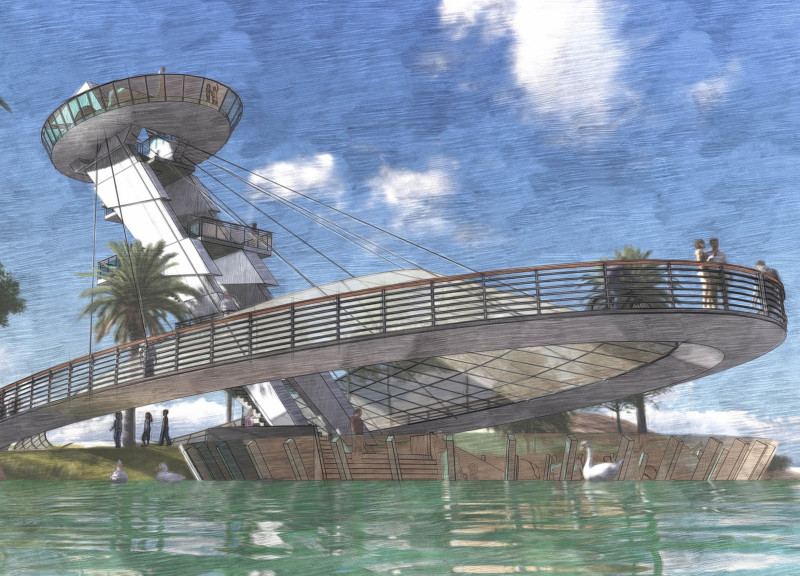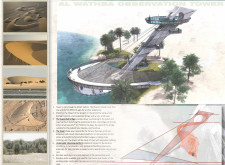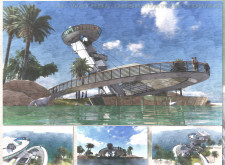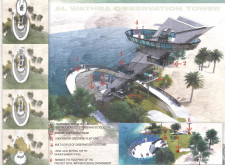5 key facts about this project
At its core, the project represents a commitment to enhancing the natural beauty of the desert landscape while providing an opportunity for visitors to connect with their surroundings. The observation tower is strategically placed to offer panoramic views, enabling guests to appreciate the vastness of the desert and the unique flora and fauna that inhabit it. The design emphasizes a straightforward, yet effective approach to architecture, ensuring that the structure complements rather than competes with its environment.
The primary function of the Al Wathba Observation Tower extends beyond merely providing a vantage point. It encompasses a range of experiences designed to appeal to a diverse audience. The inclusion of an exhilarating bungee jumping platform attracts adventure enthusiasts, while family-oriented features, such as an underwater observing platform, invite children and adults alike to explore the natural world. This multifaceted approach encourages visitors to engage with the tower and its surroundings, creating a vibrant atmosphere filled with activity and exploration.
In terms of important components, the observation tower is noteworthy for its elevated structure, which allows for unobstructed views and a sense of serenity. The design incorporates multiple observation decks, enhancing the visitor experience by offering different perspectives of the landscape. The use of materials such as steel and glass not only provides structural integrity but also creates a modern aesthetic that contrasts pleasantly with the natural environment. The transparency of the glass elements fosters a connection between the indoors and outdoors, allowing visitors to enjoy expansive views while being sheltered from the elements.
Sustainability is a vital aspect of the tower’s design. The project incorporates locally sourced materials to minimize its ecological impact and pay homage to regional craftsmanship. Notably, bamboo is utilized for shading and canopies, demonstrating a thoughtful approach to material use that prioritizes environmental responsibility. The blend of industrial materials with natural elements not only enhances the aesthetics of the structure but also reflects contemporary architectural practices focused on sustainability and community engagement.
One unique design approach evident in the Al Wathba Observation Tower is its commitment to accessibility. The ramp leading to the observation areas is designed with a gentle slope, ensuring that individuals of all abilities can comfortably navigate the space. This focus on inclusivity is an important consideration in modern architectural design, emphasizing the need for environments that are welcoming and accommodating.
Overall, the Al Wathba Observation Tower embodies a thoughtful synthesis of architecture, functionality, and sustainability. Its design highlights how structures can serve multiple purposes while respecting the surrounding environment. The integration of diverse visitor experiences encourages engagement and exploration, enhancing the overall appeal of the site.
For those interested in a deeper understanding of this architectural project, it is worthwhile to explore architectural plans, sections, and designs that detail the innovative ideas and thoughtful approaches behind the Al Wathba Observation Tower. Engaging with these elements can provide valuable insights into the project's design philosophy and its role within the context of the Al Wathba region.


























